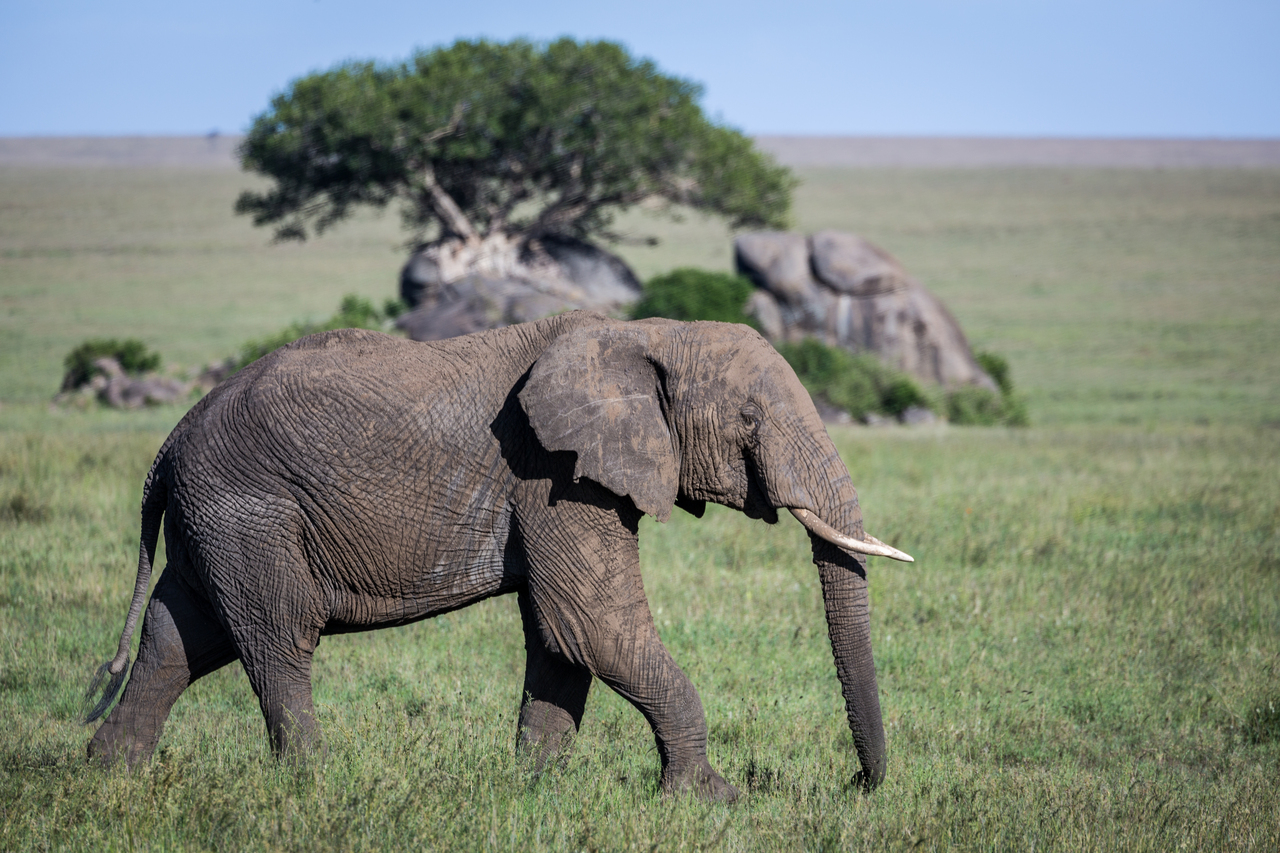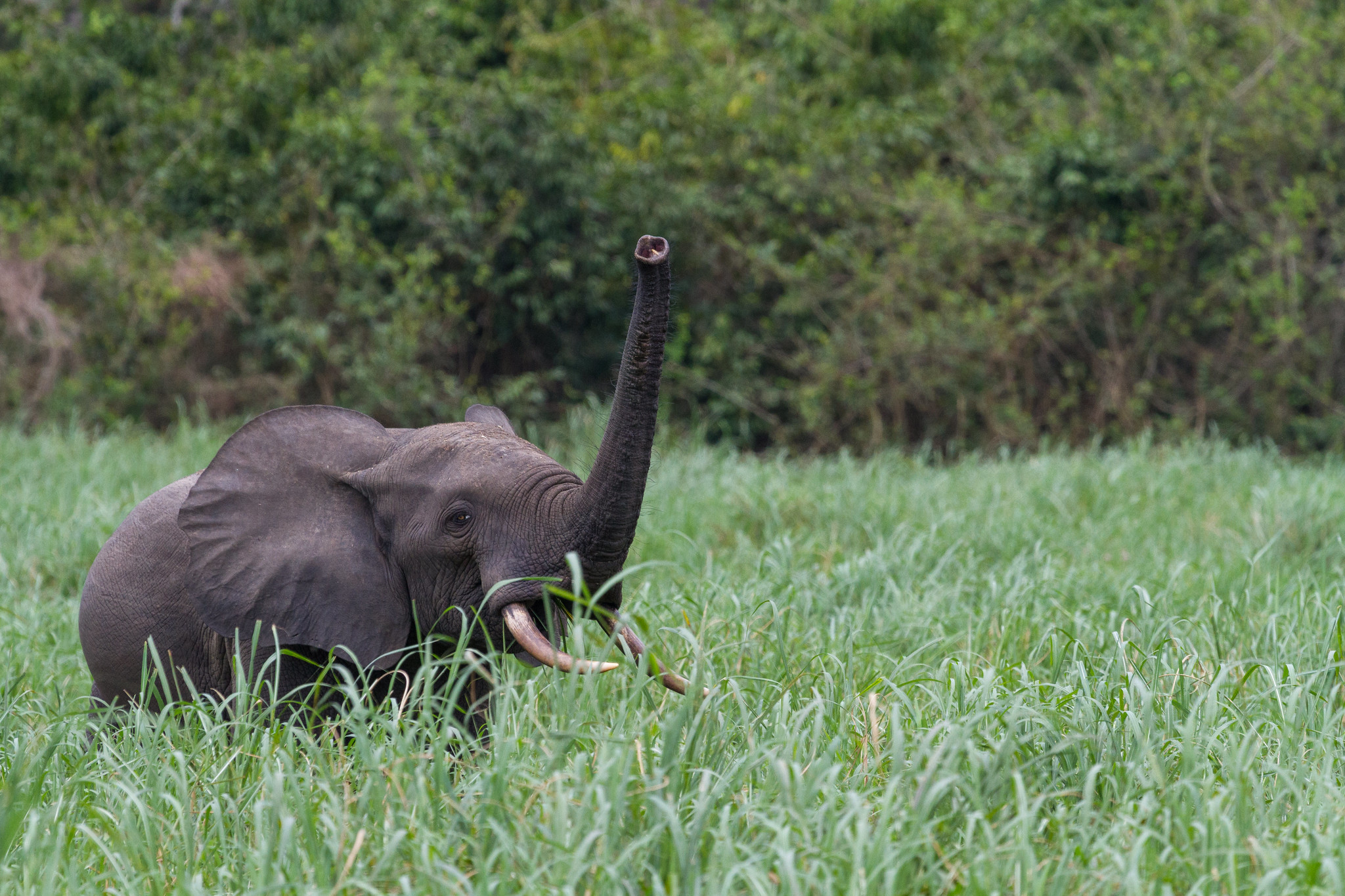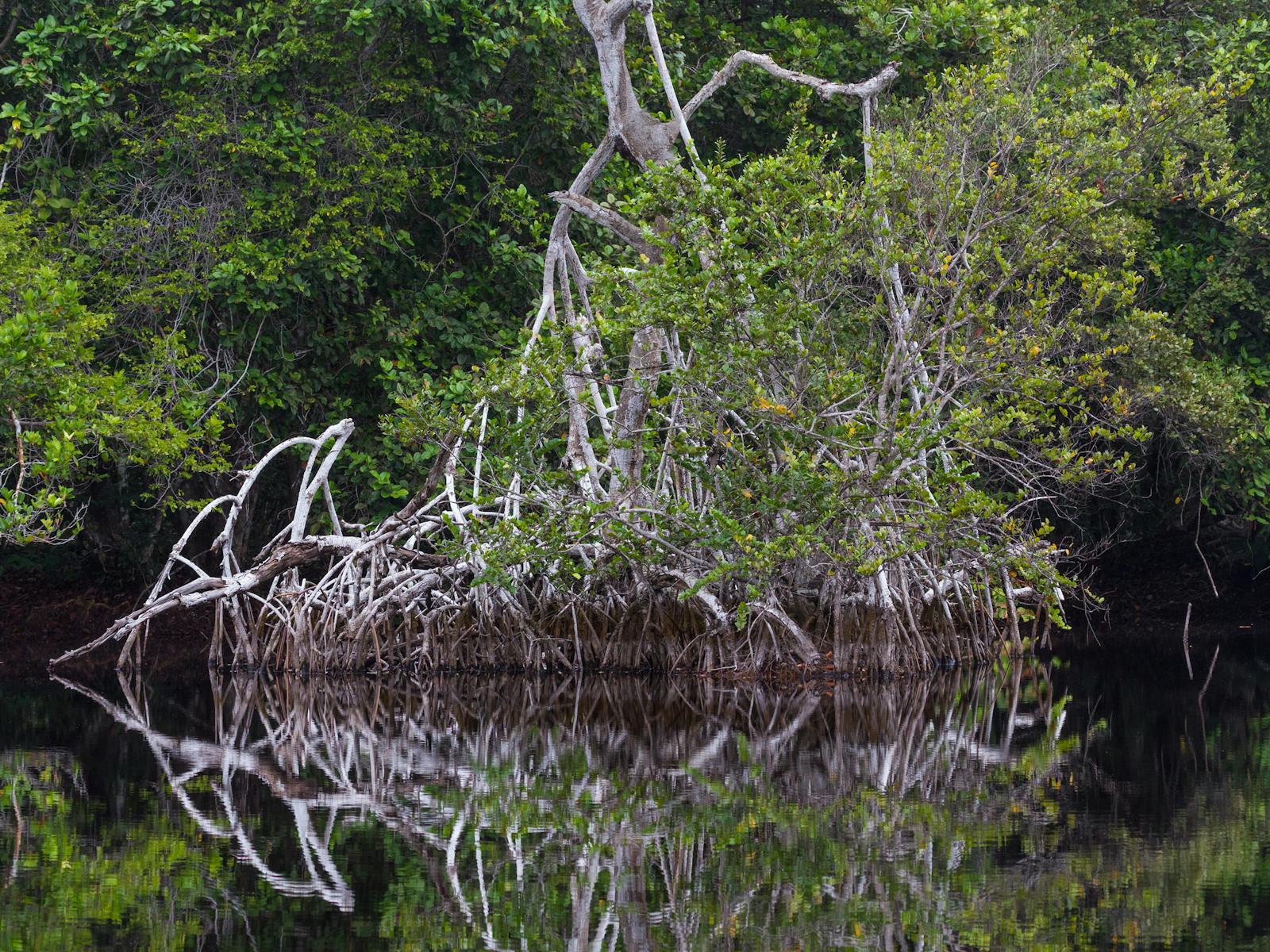Congolian Coastal Forests
The ecoregion’s land area is provided in units of 1,000 hectares. The conservation target is the Global Safety Net (GSN1) area for the given ecoregion. The protection level indicates the percentage of the GSN goal that is currently protected on a scale of 0-10. N/A means data is not available at this time.
Bioregion: Gulf of Guinea Coastal Forests & Mangroves (AT17)
Realm: Afrotropics
Ecoregion Size (1000 ha):
19,009
Ecoregion ID:
5
Conservation Target:
86%
Protection Level:
3
States: Angola, Cameroon, Republic of Congo, Democratic Republic of Congo, Equatorial Guinea, Gabon
The Congolian Coastal Forests have been an ancient cradle for Congo’s endemism and globally important populations of large forest mammals, including the western lowland gorilla, chimpanzee, and African forest elephant. The ecoregion’s forests range across the low undulating hills in the northern area to the significantly higher mountain ranges of the southern coastal area in West Africa, creating critical interconnecting migratory routes to adjacent ecoregions for much faunal diversity in this region.
The ecoregion extends from the Sanaga River in west-central Cameroon, south through Equatorial Guinea, into the coastal and inland areas of Gabon, the Republic of Congo, and the Cabinda Province of Angola. Along the coast, this ecoregion ends in the extreme west of the Democratic Republic of Congo, just north of the mouth of the Congo River. The ecoregion lies within the wet tropics and receives high rainfall, varying from 2,000 mm per annum in the north to 1,200 mm in the south. Temperatures range from an annual mean maximum of 24–27°C to an annual mean minimum of 18–21°C, and there is little seasonal variation.

The flagship species of the Congolian Coastal Forests ecoregion is the African forest elephant. Image credit: Thomas Breuer, Creative Commons
Coastal evergreen moist forests characterize the vegetation, with mixed semi-evergreen moist forests in the drier southern extension. Strips of Guineo-Congolian edaphic grassland occur along the coast, and montane forest and grassland occur on mountain ranges, which reach heights in excess of 1,000 m, including Monte Alen and Monts de Cristal.
The ecoregion falls within the Lower Guinea Forest Block of the Guineo-Congolian regional center of endemism and supports exceptional species richness and many endemic species. The endemics are concentrated in the mountains to the south, although there are also endemic species in the lowland forest. This ecoregion and the Cross-Sanaga-Bioko Coastal Forests support about 50 percent of the 7,000 to 8,000 plants endemic to tropical West Africa. Three of the four families of plants endemic to tropical Africa—Huaceae, Medusandraceae, and Scytopetalaceae—are also abundant in the same area. Over 200 plant species are strictly endemic to this ecoregion.
The site of highest importance for plant conservation is Monts de Cristal in Gabon, which has more than 3,000 plant species and 100 strict endemics. Important larger mammal populations include mandrill, black colobus, bongo, and forest buffalo. The reptiles have high species richness and contain seven strict endemic species, including the Apouh night frog and Perret’s shovelnose frog.

A forest elephant in Loango National Park, Gabon. Image credit: Courtesy of Grégoire Dubois
Most remaining areas of rainforest have been selectively logged, especially in Equatorial Guinea and southern Cameroon. The area of untouched primary forest is small and mainly in Gabon and protected areas in Cameroon. The parts of this ecoregion that are under protection include the Campo-Ma’an National Park and Douala-Edéa Faunal Reserve in Cameroon, and the Monte Alén National Park in Equatorial Guinea. In Gabon, protected areas include part of the Lopé National Park, the Moukalaba Doudou National Park, the Monts de Cristal National Park, the Waka National Park, the Loango National Park, and the Wonga-Wongué Presidential Reserve.
Logging concessions cover almost the entire ecoregion, including many protected areas, and pose a threat to the continued existence of primary stands of rainforest. In the central portion, the human population is small; therefore, the threat from agricultural conversion is lower than in the rest of the ecoregion. Logging has facilitated hunting, poaching, and the trade in bushmeat by providing markets, transport, and access to remote forests. Hunting is the main threat to larger mammals. Elephants, for example, are poached for their meat and ivory.
The priority conservation actions for the next decade will be to
- support local communities in finding alternative income and protein sources to reduce hunting,
- track and monitor wildlife, including forest elephants, to mitigate human-elephant conflicts and
- support agro-industry to manage high conservation value forested areas.
-
-
1. Critical Ecosystem Partnership Fund. 2015. Ecosystem Profile: Guinean Forests of West Africa Biodiversity Hotspot.
2. World Wide Fund for Nature. 2017. Coastal Forests Programme. [Online]. [Accessed 10 January 2018]. Available from: http://www.wwf-congobasin.org/where_we_work/cameroon/coastal_forests_programme/
3. The Forests of the Congo Basin – State of the Forest. 2013. Eds: de Wasseige, C., Flynn, J., Louppe, D., Hiol Hiol, F., Mayaux, P.H.- 2014. Weyrich. Belgium. 328p -
Cite this page: Congolian Coastal Forests. Ecoregion Snapshots: Descriptive Abstracts of the Terrestrial Ecoregions of the World, 2021. Developed by One Earth and RESOLVE. https://www.oneearth.org/ecoregions/congolian-coastal-forests/
-







